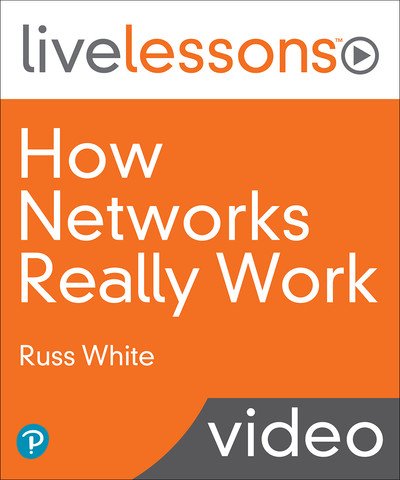
Duration: 7h 4m | Video: 1280×720 30fps | Audio: AAC, 48 kHz, 2ch | Size: 1.47 GB
Genre: eLearning | Language: English
There are many elements to a networking system, including hosts, virtual hosts, routers, virtual routers, routing protocols, discovery protocols, etc. Each protocol and device (whether virtual or physical) is generally studied as an individual “thing.” It is not common to consider all these parts as components of a system that works together to carry traffic through a network. To show how all these components work together to form a complete system, this video course presents a series of walk throughs showing the processing involved in various kinds of network events, and how control planes use those events to build the information needed to carry traffic through a network.
One of the foremost internetworking experts, Russ White leverages his decades of experience in building and troubleshooting large scale networks at the likes of Cisco, LinkedIn, and Juniper to present you with a proven methodology that will help you understand why and how networking technologies work. You will learn to consider the specific problems being solved, why specific solutions are chosen, and how solutions relate to one another. In addition to providing a solid overview of many common protocols and solutions, this valuable insight helps you develop the ability to understand why you should make particular implementation decisions and what the tradeoffs are in each situation, enhance your troubleshooting skills by understanding how each technology works and what problems might arise with any solution, and finally to quickly understand new technologies as they are released by relating them to previously developed technologies.
The course begins with the discovery of the information a host needs to send traffic and the forwarding process within a network device. The first walk through is simple, but they will build in complexity until traffic carried in an overlay through a hardware optimized forwarding plane is explained. Along the way, the four problems a control plane must solve will be exposed along with the solutions commonly used to solve these problems. After this basic information is covered, more advanced situations will be considered, including network resilience from a control plane perspective and fast reroute techniques.
About the Instructor
Russ White began working with computers in the mid-1980s, and computer networks in 1990. He has experience in designing, deploying, breaking, and troubleshooting large scale networks, and is a strong communicator from the white board to the board room. Across that time, he has co-authored more than forty software patents, participated in the development of several Internet standards, helped develop the CCDE and the CCAr, and worked in Internet governance with the Internet Society. Russ has a background covering a broad spectrum of topics, including radio frequency engineering and graphic design, and is an active student of philosophy and culture.
Russ is a co-host at the Network Collective, serves on the Routing Area Directorate at the IETF, co-chairs the BABEL working group, and serves on the Technical Services Council as a maintainer on the open source FR Routing project. His most recent works are Computer Networking Problems and Solutions, The Art of Network Architecture, Navigating Network Complexity, and Intermediate System to Intermediate System LiveLessons.
Skill Level
Beginner to Intermediate
Learn the problems and solutions associated with transporting packets through networks, including
Transport solutions
Routing protocol basics
Abstraction
Control plane examples and convergence
Control plane resilience
Who Should Take This Course
This video course addresses fundamental concepts in a way that is applicable for many kinds of students in a wide variety of learning situations, including
Beginning learners just starting a career in network engineering
Intermediate level network engineers who have some experience, and perhaps an associates or professional level certification, who would like to take their career to the next level
Experienced network engineers who would like to fill in their knowledge, or understand why things work the way they do, rather than simply how they work
Programmers who would like to understand the operation of networks in order to improve their ability to write network-based applications
Development operations engineers who would like to understand why networks operate the way they do, and possibly migrate into full time network engineering roles
College students who are taking courses in or majoring in information technology who would like to supplement their learning in the network engineering space
College students taking a course that uses the Problems and Solutions in Network Engineering book as course material, and would like additional knowledge to help them to better understand the material
Password/解压密码www.tbtos.com